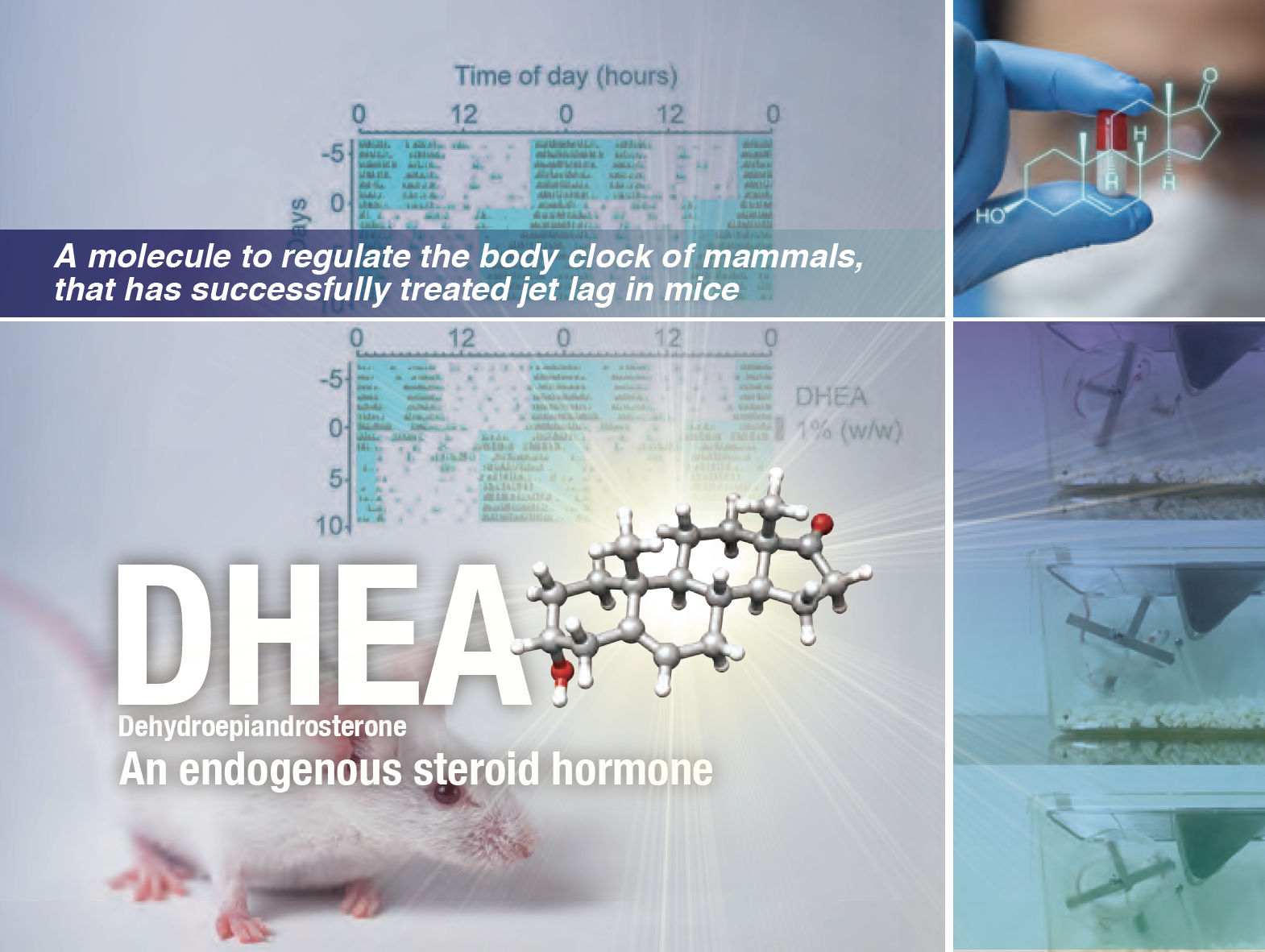
From the screening of existing drugs, the discovery of a molecule that can change the circadian rhythm of mice
We all have a biological clock inside our bodies that marks out a rhythm of approximately one day. This is known as the circadian clock, and physiological functions such as sleep, body temperature, blood pressure and metabolism all align with this rhythm. Thus, if the circadian clock becomes chronically out of alignment, the risk of illness is increased. The elucidation of this process was so keenly desired in medicine that the discovery of the molecular mechanism of the circadian rhythm was awarded the Nobel Prize in Physiology or Medicine in 2017.
The ITbM research group, using drug repositioning, tested over 1000 drugs to find molecules that could speed up and slow down the circadian clock in human cells. Among the molecules found to increase its speed is the important human hormone, also known as a rejuvenating drug, dehydroepiandrosterone (DHEA). When DHEA was mixed with the food of mice, it was found to reduce symptoms of desynchronosis (jet lag).
What is drug repositioning?
Although a large amount of money is currently spent on drug development, there is by no means a high success rate. Drug repositioning is a method of finding out whether existing drugs, which are known to be safe and effective, can be used as new methods to treat other diseases. By continuing to evolve this process, it is hoped that an existing drug can be used in the future to treat circadian rhythm disorders.
Reference
“Identification of circadian clock modulators from existing drugs” by T. Katherine Tamai, Yusuke Nakane, Wataru Ota, Akane Kobayashi, Masateru Ishiguro, Naoya Kadofusa, Keisuke Ikegami, Kazuhiro Yagita, Yasufumi Shigeyoshi, Masaki Sudo, Taeko Nishiwaki-Ohkawa, Ayato Sato, and Takashi Yoshimura, EMBO Molecular Medicine 2018, 10, 5, e8724. DOI: 10.15252/emmm.201708724